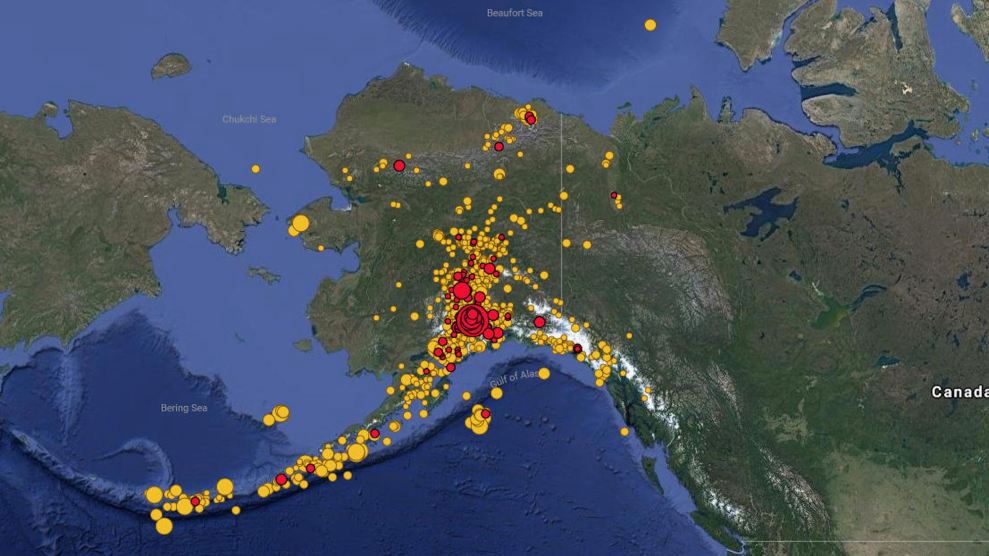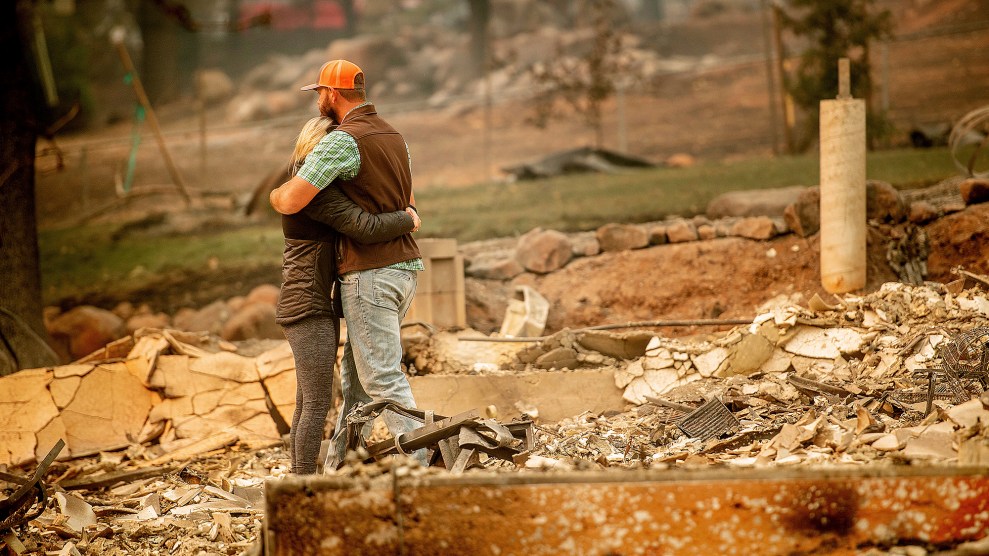
Earthquake activity recorder from November 14-30, 2018. An intense earthquake struck the Anchorage area Friday morning, causing severe shaking and damage and triggering fears of a tsunami. The magnitude-7 quake occurred at 8:29 a.m., local time, the epicenter just north of Anchorage. UAF Quake Center/ZUMA
This story was originally published by HuffPost. It appears here as part of the Climate Desk collaboration.
Residents of Anchorage, Alaska, are assessing the damage from a massive earthquake that struck Friday morning and are breathing a sigh of relief after officials canceled tsunami warnings.
Measured as a magnitude 7.0 quake by the U.S. Geological Survey, the quake hit at 8:29 a.m. local time, with the epicenter just 10 miles from the city of nearly 300,000 residents. Residents of Fairbanks, a city of about 30,000 more than 350 miles away, reported feeling shaking there too.
Though officials have yet to release any estimates of damage, injuries or fatalities, people have begun to share photos and videos of destruction on social media. An image from the KTVA newsroom, the CBS affiliate station in Anchorage, shows collapsed tables and computers and TVs dangling from their mounts. All local TV stations were reportedly knocked off the air.
KTVA’s newsroom felt the blow of the earthquake this morning. #anchorage #alaska #earthquake #weather pic.twitter.com/d1SaxriGw9
— Cassie Schirm (@cassieschirmtv) November 30, 2018
Other shocking photos and videos show collapsed roads with cars stranded on them, including these near the Ted Stevens Anchorage International Airport:
The northbound onramp for International Airport Rd. at Minnesota Blvd. collapsed Friday morning during the earthquake. https://t.co/vznBt6ZtF6 pic.twitter.com/FzMWpETXb4
— Anchorage Daily News (@adndotcom) November 30, 2018
7.2 earthquake here in Anchorage, Alaska. This is a video my dad took from the Minnesota exit ramp from international. 😰😰 pic.twitter.com/1yOGj3yz9q
— sarah m (@sarahh_mars) November 30, 2018
Officials canceled a tsunami warning posted for the Cook Inlet and southern Kenai Peninsula near Anchorage. The National Weather Service had warned residents in Kodiak and Seward that tsunami activity could start just an hour after the earthquake struck.
A 7.0 quake can be highly dangerous. The 1989 Loma Prieta earthquake in San Francisco was measured at magnitude 6.9 and killed 63 people, and the 1994 magnitude 6.7 Northridge earthquake in Southern California killed 57―though both quakes struck areas more populous than Anchorage.
A National Weather Service employee on duty in Anchorage during the temblor called it “the scariest earthquake I have ever been in.”
That was the scariest earthquake I have ever been in. Lead on shift…we evacuated the NWS Anchorage building.
— Alaska Meteorologist. (@PV_Anomaly) November 30, 2018
Former Alaska Gov. Sarah Palin released a statement that her “family is intact” but her “house is not.”<
This is a developing story. Check back for updates.















